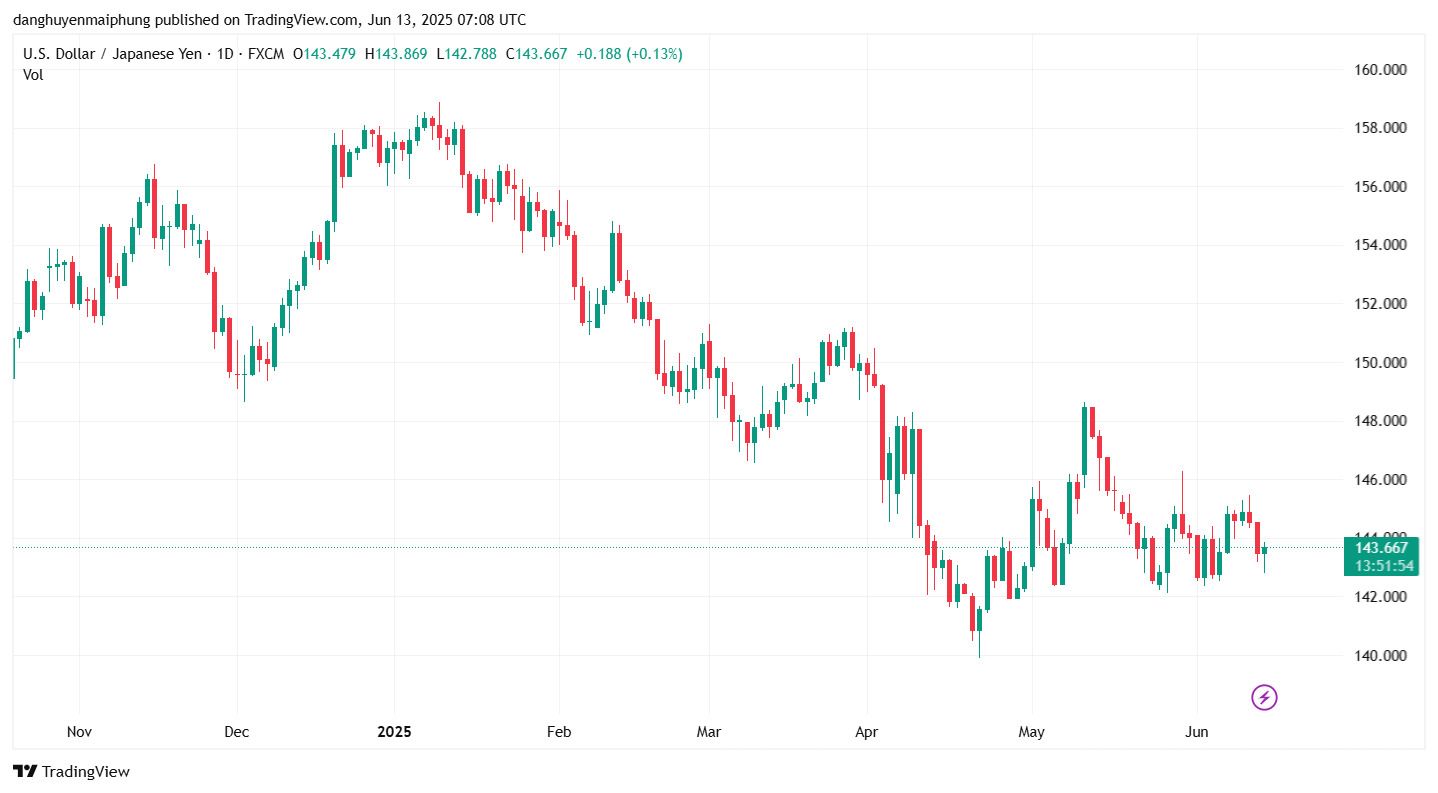Yen exchange rate today
According to Lao Dong, on June 13, the Japanese Yen (JPY) continued to weaken compared to the peak of more than a week before against the US Dollar (USD), pushing the USD/JPY exchange rate to a new high for the day, around 143.75.

According to Bloomberg News, the main reason is that the market predicts that the Bank of Japan (BoJ) will keep the benchmark interest rate unchanged at 0.5% at next week's meeting. However, investors still believe that the BoJ will not abandon the roadmap for normalizing monetary policy, especially in the context of expanding domestic inflation.
Yen's decline may be limited
According to FXStreet, the JPY's decline may be limited by the currency's safe-haven asset role. Geopolitical tensions in the Middle East escalated after Israel launched a series of airstrikes targeting Iran, targeting nuclear facilities, missiles and military headquarters. The Israeli Defense Minister has declared a special emergency and warned that a retaliatory attack from Iran could take place soon. Meanwhile, Iran has said it will target US military bases if the situation escalates. The risk of a regional conflict explosion is supporting demand for the Yen as a place to "relieve" financial "storm".
For the US side, newly released economic data shows signs of cooling inflation and a weakening labor market. The Producer Price Index (PPI) in May only increased by 0.1%, lower than the forecast. At the same time, the number of unemployment benefit applications in the US remains high, while the number of people continuing to receive benefits reached the highest level since November 2021. This raises expectations that the US Federal Reserve (Fed) may cut interest rates next September.
However, the prospect of a rate cut in the US has caused the USD to weaken, reaching its lowest level since March 2022, thereby curbing the increase of the USD/JPY pair. Investors are closely monitoring the Michigan consumer confidence index and inflation expectations in the US, but the main focus is still Middle East tensions and new trade policies that former President Donald Trump has just announced, including the possibility of applying new unilateral tariffs and expanding steel tariffs to 50% for many household items.
With the current situation, the USD/JPY pair is likely to end this week in red for the first time after three consecutive weeks of increase, showing the caution covering the global financial market.











